Underwater tour bus (1932)
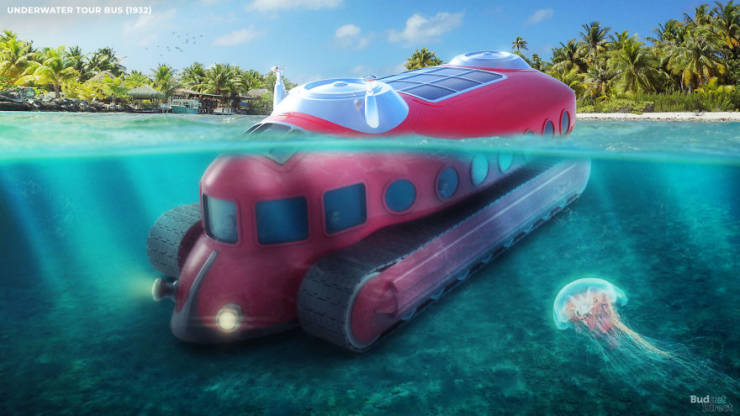
“Ocean marvels are seen from the underwater bus!” The underwater tour bus rolls on tractor treads beneath the surface of shallow waters. But the claustrophobic tourist needn’t worry about getting trapped. The passenger compartment can be instantly released from the undercarriage to float to safety in case of breakdown.
The inventor was an engineer from Nice in the south of France who believed sightseeing trips like this were the way forward. He also developed an underwater railroad for cable-drawn carriages. And the all-important matter of oxygen? By bus or by rail, your air will be funneled to you through telescoping pipes that reach above the waves.”
Amphibious campervan concept (1947)
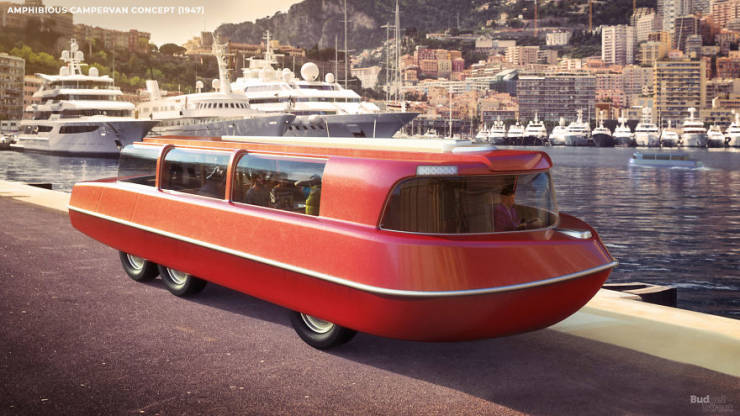
“The industrial designer Robert Zeidman invented this “civilian amphibian” after seeing experimental vehicles emerging from the sea during World War 2. This luxury 34-foot campervan features a built-in bar, space for marine equipment, and a convertible lounge compartment that opens up at the sides to become a fishing cockpit. There is also room in the driving compartment to create a bunk for your chauffeur-pilot if you’d prefer to spend your journey watching the built-in TV rather than driving.
Look at the outside of the ‘Vacationer,’ and it’s clear Zeidman was a veteran of the military rather than, say, Chevrolet. But experienced yacht builders advised him on the interior, which is a model of post-war domestic convenience. It features cutting-edge lighting solutions and seats that conceal special heaters for keeping meals hot.”
Cross-country cruise ship (1957)
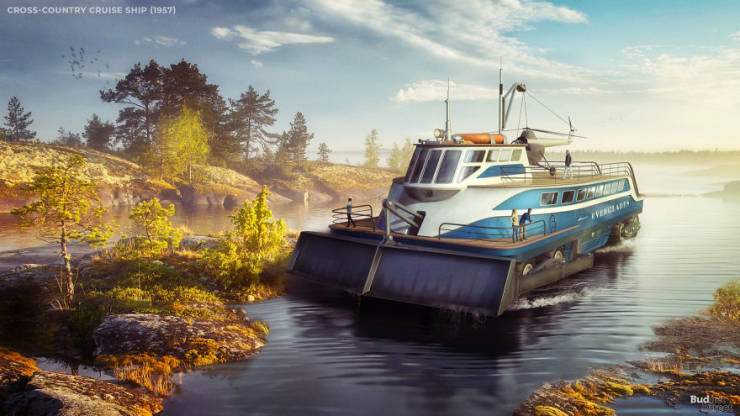
“Don’t like the idea of being stuck on a boat at sea for weeks on end? Try a cross-country cruise! The cross-country cruise ship has soft “sausage-like” airbag tyres that can handle any terrain. And those weight-spreading wheels have an unexpected benefit if you’re unlucky enough to get run down: “servicemen and women who have tried it say it’s like a nice, beefy massage.”
This “crazy, mixed-up amphibious train” was invented by legendary pulp and sci-fi illustrator Frank Tinsley for Mechanix Illustrated magazine in 1957. But the “saggy bladder” wheel technology is based on William H. Albee’s real-life patented ‘Rolligon’ tyres. Albee had witnessed Eskimos carrying tons of meat across the land on swollen sealskins, and he built a business offering similar solutions to industrial, military, and agricultural customers. Sadly, the tourism industry will have to wait.”
Vacation house of the future (1957)
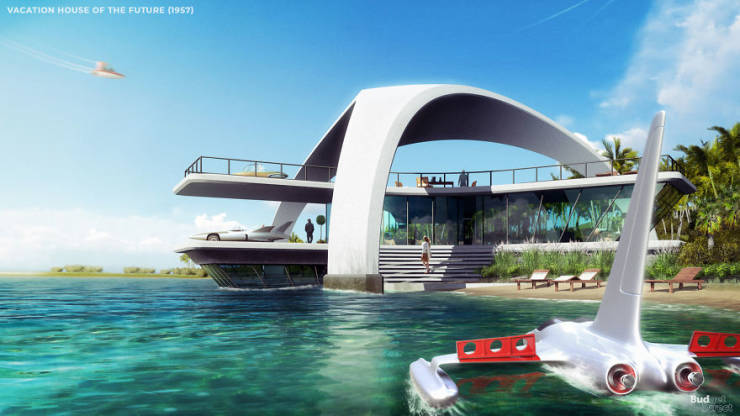
“James R. Powers’ vision of a luxury ocean-side home is walled with glass and protected from the sun by an imposing concrete canopy. It features an underwater observation deck and a combination dining balcony/helipad. If built in the near future, all that glass would probably be coated with thin-film solar skin to energize the whole complex.
Celebrated designer Powers drew the house as a backdrop to his ideas about the vehicles we’d drive to get there (most of the ‘airphibious’ variety – designed for land and air). Powers worked at Ford’s Advanced Styling Studio and was encouraged to imagine future vehicles unhindered by the conventions of the day. Rather than dream up fancy cars in isolation, the studio’s designers made sketches or clay models that imagined the future roads where they’d be driven – and the holiday homes where they would be parked (or landed).”
Space colony holiday (1977)
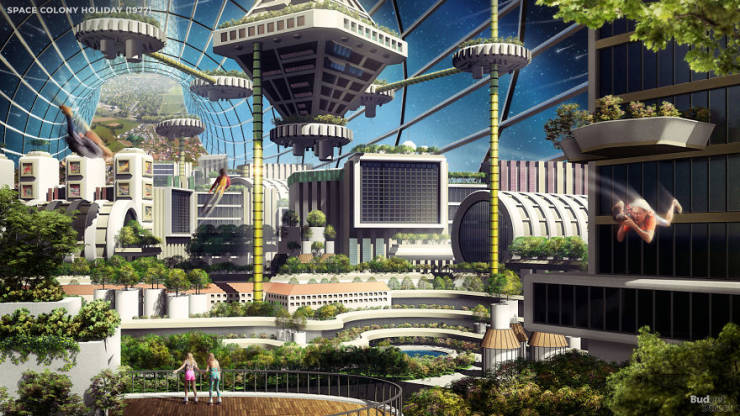
“In the late 1970s, NASA was sure that colonization of the stars would be the next big thing, and the space agency commissioned artist Rick Guidice to illustrate their reports on large-scale space habitats. Guidice’s background in advertising led to truly inspirational illustrations of how we might live.
Space colonies would be used for off-world mining and the zero-gravity manufacturing of giant spacecraft. But all those blue-collar workers would need somewhere to live—and play. Guidice’s leisure-oriented city is lined with greenery just about anywhere you could fit a garden. Ponds, floating buildings, and enormous glass domes add to the sense of airiness and relaxation. And what future would be complete without jetpacks?”
 Barnorama All Fun In The Barn
Barnorama All Fun In The Barn